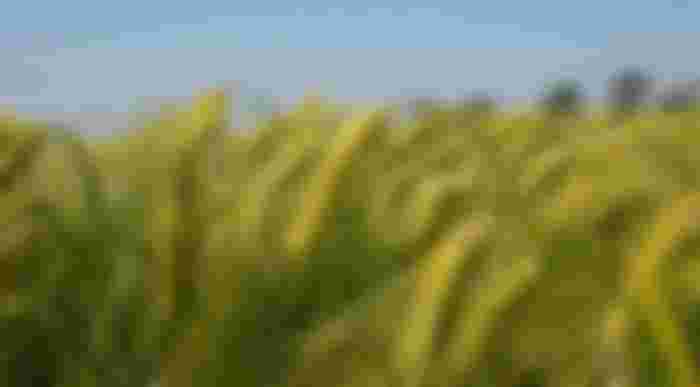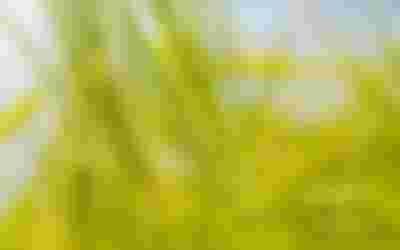Wheat cultivation

After rice, the most in demand food in Bangladesh is flour and meal. And flour comes from wheat. The people of the country, especially in urban areas, have a large portion of breakfast bread or flour bread-parota. Although the cultivation of wheat in Bangladesh has not been as widespread as it should have been, the yield of wheat can be obtained by cultivating the land in the same manner in which wheat is cultivated according to modern methods.
Cultivation season and variety
The best time to sow wheat seeds is from the end of Kartik to the third week of Agrahayan or from 15th to 30th of November. Notable among the varieties that can be sown at this time are- Kanchan, Akbar, Agrani, Pratibha, Sourav, Gaurab, Sonalika. But there are some varieties which are somewhat heat tolerant, they can be sown till 15-20 December. These varieties are- Sufi, Vijay and Pradeep. In areas where paddy harvesting and land preparation are delayed, good yields are obtained by sowing.
Suitable climate

Wheat grows in temperate and subtropical climates as well as in temperate and tropical climates. Annual rainfall of 15-45 inches (360-1143 mm) is very suitable for wheat cultivation, but wheat grows well even with an average annual rainfall of 10-60 inches (254-16 mm). On the one hand, wheat can survive the extreme cold of Siberia and the polar regions, on the other hand, wheat can be grown at a temperature of 21-24 degrees Celsius. However, in hot weather, it is necessary to maintain a cool environment during flowering, otherwise the grain will not germinate in the wheat plant. Wheat can adapt strangely to the height of the land Wheat can also be grown at an altitude of 10,000 feet (3,100 m) above sea level.
Soil type

High and medium loamy soils are more suitable for wheat cultivation Wheat yield is less in saline soils Generally high and medium elevation lands are suitable for wheat cultivation However, wheat is also cultivated in medium low lands Loam and sandy loam soils are best for wheat cultivation Wheat can also be grown on heavy, clay and loamy soils with easy drainage.
Cultivation method
Wheat cultivation is more prevalent in the northern districts of Bangladesh. Apart from the greater Dinajpur, Bogra, Rangpur, Rajshahi, Kushtia, Jessore and Faridpur districts, wheat is cultivated more or less in the central part of the country (greater Mymensingh, Dhaka and Comilla). High and medium lands are more suitable for wheat cultivation. However, wheat can be cultivated in medium low lands. Loam and sandy loam soils are best for wheat cultivation. Wheat can also be cultivated in clayey and clayey loam soils where water is easily drained. Wheat yield is low in saline soils. Wheat seeds are required for sowing at 47 kg per acre or 18 kg per bigha. Seed germination rate is 75% or more. If it is below 80%, more than 400 gms of wheat seed per acre has to be sown for less than 1%. However, if it is below 80%, the wheat seeds should not be sown. Before sowing, wheat seeds should be treated with Provex-200 (3 g / kg seed) or Carbendazim fungicide (2 g / kg seed). Seed treatment can control the incidence of seed borne diseases and keep the newly grown seedlings healthy and vigorous. Studies have shown that it increases the yield of wheat by 10-12 percent. Wheat seeds can be sown in rows or sprinkled. However, after making the land by weaving in rows, with the help of plow or seed sowing machine, make a narrow ditch of 20 cm. 4-5 cm in the distance row. Seeds are sown at depth. Wheat can be sown in the shortest time with the help of power tiller powered seed sowing machine immediately after harvesting. This machine can be used for simultaneous cultivation of land, sowing of seeds in rows and ladder work.
Fertilizer application

To get good yield of wheat, it is better to apply 30-40 kg of organic manure per century while cultivating the land. During the last tillage including irrigation, 700-800 g urea, 600-700 g TSP, 300-400 g MOP and 450-500 g gypsum fertilizer should be applied per cent. When cultivating with irrigation, if the leaves have 3 leaves, after the first irrigation, 300-350 g of urea per cent should be applied in the afternoon when the soil is wet. On the other hand, in case of cultivation without irrigation, all urea (last cultivation time + top application time) fertilizers have to be applied together with other chemical fertilizers during the last cultivation. In case of boron deficiency or boron deficiency in the soil, 25 g of boric acid per cent should be applied at the time of last cultivation. In lands where there is a shortage of zinc fertilizer and zinc fertilizer has not been used in the previous crop, 50 gm per cent of zinc fertilizer has to be applied. It is better to give zinc fertilizer at the time of last cultivation.
Based on soil soil test, after finding the acidity or pH value of the soil, if the acidity is between 4.0-5.0 per kg and if the acidity is between 5.0-6.0 per cent, apply 4 kg per cent at least 15-20 days before sowing. Is. In this case, immediately after harvesting the previous crop of wheat, the vacant land has to be sprinkled with dolochun and cultivated horizontally. Then it is irrigated. 15-20 days after application of Dolochun, wheat seeds are sown again with cultivation and ladder. Wheat yield can be increased up to 15-20 percent if the approved dose of dolochun is used. Once used, lime is no longer needed for the next three years. As mentioned earlier, light irrigation should be given for the first time when wheat seedlings have 3 leaves (18-21 days after sowing). The second irrigation should be given 50-55 days after sowing when the ears of wheat come out and the third irrigation should be given at the time of grain formation i.e. 65-70 days after sowing. However, depending on the type of soil or in dry weather, for better yield, additional one or more irrigations are required. It should be noted here that wheat requires only about one-third less irrigation water than rice.
Weed control
Mutha, Durba, Bathua etc. weeds can grow in wheat field. If weeds are not controlled in time, the growth of wheat plant is hindered. 15/16 days after sowing the seeds in the scattered wheat field, many weeds can be removed by double scratching horizontally. As the soil becomes loose as a result of scratching, the growth of seedlings also accelerates. A few days after combing, the remaining weeds have to be cleared with the help of weeder. On the other hand, in the case of wheat sown in rows, weeding has to be done with the help of weeder before the first irrigation.
Insect control
Wheat usually has less insect infestation. However, sometimes the attack of cut insects, jab insects and mazara insects occur. Caterpillars can be controlled by applying carbofuran pesticides during the last tillage of the land. In case of infestation of Jab insects, Imidachloropid (Admire / Emitaf / Tido etc.) should be sprayed twice in 7 consecutive days. Diazinon-50 EC is mixed with 2 ml per liter of water and sprayed to control Mazra insects.
Disease-plague
Infection of wheat is more prevalent. Wheat leaf rust disease, root rot disease, loose blight disease, black spot disease in wheat seeds are some of them. Disease resistant Kanchan, Akbar, Agrani, Pratibha, Saurabh and Gaurab varieties can be cultivated to control leaf rust, root rot and loose weeds. Also collect seeds from disease free fields, treat seeds with Provex-200 (3 gm per kg) or purify seeds with Carbendazim fungicide (2 gm per kg) and sow the seeds, destroy crop residues, use balanced fertilizers. Wheat disease is reduced by maintaining moderate soil moisture or joe condition at all times, irrigating the affected field or preventing water from entering the healthy field and taking overall care management of the field by weeding. To control rust disease of leaves, before flowering, at the time of flowering and germination, 2 ml of propiconazole (Tilt / Proud / Econazol etc.) 250 EC in 2 liters of water in 5 percent of the land. Mixing and spraying controls the disease as well as increases the yield by 15-20 percent.
Wheat seeds take up to 100-112 days depending on the variety from sowing to ripening. With proper environment and good care measures, the yield is 1.45 to 1.95 tons per acre.
Ways to increase wheat yield
Wheat is the second most important cereal crop in our country after paddy. Wheat cultivation requires less water. Boro paddy takes 55 to 60 acres per hectare and wheat cultivation takes 15 acres per hectare. Wheat pests and insects are very rare. As a result, there is no need to use pesticides.
What to do to increase wheat yield-
Suitable land and soil
High and medium loam soils are more suitable for wheat cultivation.
Introduction to caste
The high yielding varieties developed by Bangladesh Agricultural Research Institute are- Kanchan, Akbar, Aghrani, Pratibha, Saurabh, Gaurab, Bari Gham 21 (century), Bari Gham 22 (Sufi), Bari Gham 23 (Vijay), Bari Gham 24 (Pradeep). , Barley wheat 25, barley wheat 28 etc. At present, the yield of kanchan has decreased due to leaf blight, so it is better not to cultivate this variety. Shatabdi, Sufi, Vijay, Pradeep, Bari Wheat 25, Bari Wheat 26- These varieties are higher yielding, disease resistant and heat tolerant than the old varieties.
Sowing time
The best time for sowing of high yielding varieties of wheat is from 1st to 15th agrahayan (15th to 30th November). After this period, if wheat is sown late, the yield decreases at the rate of 1.3% per day.
Seed germination rate
If the seed germination rate is 80 percent or more, half a kg of seed should be sown every century. If the germination rate is less than 60 percent, additional seeds should be sown at the rate of 130 grams per bigha (33 percent) for 1 percent less germination. If the germination rate is less than 80 percent, it is not right to sow the seeds.
Seed purification
Before sowing, seeds should be treated with Provex-200 WP at the rate of 3 gm per kg of seed.
Method of sowing
Wheat seeds can be sown in rows or sprinkled. After preparing the land for sowing in the line, make rows 6 inches apart with a small plow and sow the seeds 2 inches deep.
Fertilizer management
Urea 24 to 25 kg, TSP 18 to 19 kg, MOP 5 to 6 kg, gypsum 14 to 15 kg, 1 kg 300 g borax, dung / compost 1000 to 1200 kg per bigha. Two thirds of urea fertilizer and complete TSP, MOP and gypsum should be applied at the time of last cultivation and one third of the remaining three parts of urea at the time of first irrigation. If there is a shortage of zinc fertilizer in the land and zinc fertilizer has not been applied in the previous crop, apply 1.5 kg zinc fertilizer (zinc sulphate) per bigha at the time of last cultivation. As the acidity increases, the effectiveness of phosphorus fertilizer in the soil decreases and as a result the yield of wheat decreases. Yield is increased by 15 to 20 percent by spraying dolochun at the rate of 130 kg per acre in acid soils. Dolochun should be applied about two weeks before land preparation.
Chita management
In the northern soils, wheat stalks are occasionally seen and this results in reduced yields. Apply organic and chemical fertilizers in approved doses and apply 600 g of boric acid or 1 kg 300 g of borax per bigha.
Chasing birds
Birds should be chased for 10 to 12 days after sowing.
Irrigation and weed management
The first irrigation should be given at the time of three leaves of seedlings (18 to 21 days after sowing), the second irrigation at the time of emergence of wheat ears (55 to 60 days after sowing) and the third irrigation at the time of grain formation (75 to 60 days after sowing). Wheat fields cannot be irrigated like paddy. Irrigation water should be sprinkled through drains or ribbon pipes. With proper irrigation management it is possible to increase the yield up to 56%. Within 25 to 30 days after sowing, after the first irrigation, a weeder increases the yield by about 10 to 12 percent.
Caution
Never pull a banana tree or plum thorn in a wheat field, do not give a ladder so much wheat will be damaged.
Insect management
Wheat is less susceptible to diseases than other crops. The two main diseases of wheat are leaf rust and leaf spot disease. The disease is caused by the attack of fungi. Rubbing the rusted leaves leaves a powder like reddish rust. Wheat leaf spot disease attacks the leaves and leaves are scorched. To control all these diseases, at the time of emergence of sheaf and after 15 days, once again apply half (0.5) ml of Tilt 250 EC fungicide per liter of water. As it is mixed with water and sprayed, the yield increases by about 15 to 20 percent and the quality of seeds increases. In case of high infestation of Mazra insects in wheat field, Diazinon 80-EC should be applied at the rate of 2 ml per liter of water. This insect can be controlled by applying mixed rate.
Rat control
In case of infestation of rats in the field, rats should be controlled by trapping, pouring water in the pit or using poison zinc (zinc phosphide / lanirate).
Harvesting
Wheat should be cut when ripe or yellow. On a sunny day, it is better to cut the wheat in the morning and thresh it in the afternoon



